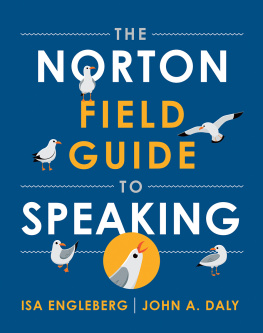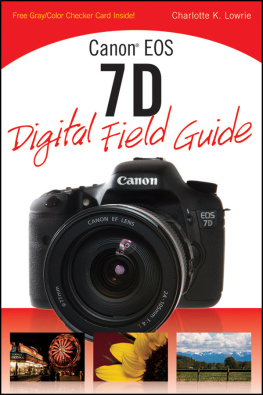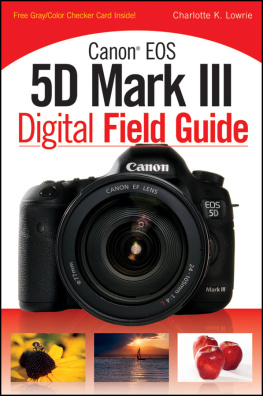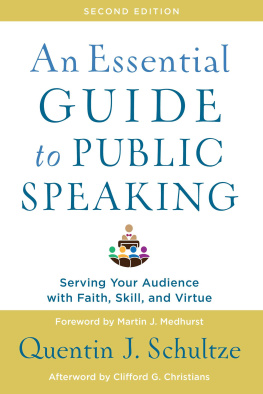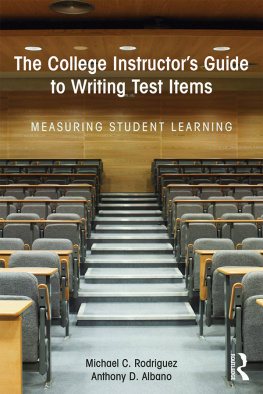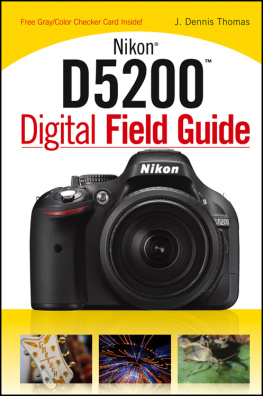Publishers Notice
Please note that this version of the ebook does not include access to any media or print supplements that are sold packaged with the printed book.
Using The Norton Field Guide to Speaking
Use the list here to find a particular chapter. Look inside for a complete table of contents. If you are looking for a specific topic, check the at the back of the book, where youll find definitions of all the key terms and topics, along with a listing of the pages where theyre covered in detail. And take note of the icons and color coding below; they will help you find what youre looking for.









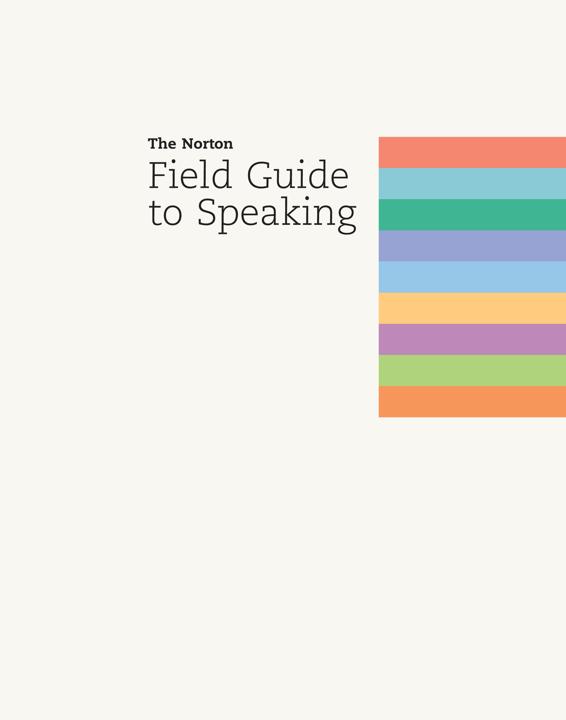
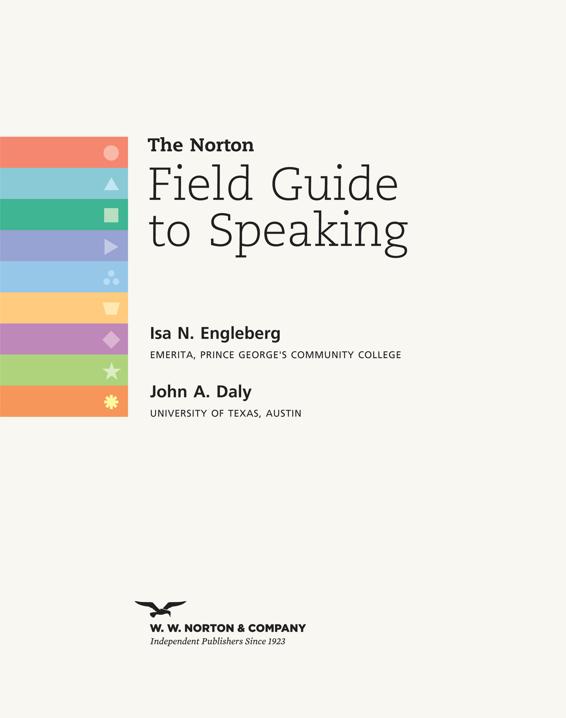
W. W. NORTON & COMPANY has been independent since its founding in 1923, when William Warder Norton and Mary D. Herter Norton first published lectures delivered at the Peoples Institute, the adult education division of New York Citys Cooper Union. The firm soon expanded its program beyond the Institute, publishing books by celebrated academics from America and abroad. By midcentury, the two major pillars of Nortons publishing programtrade books and college textswere firmly established. In the 1950s, the Norton family transferred control of the company to its employees, and todaywith a staff of five hundred and hundreds of trade, college, and professional titles published each yearW. W. Norton & Company stands as the largest and oldest publishing house owned wholly by its employees.
Copyright 2022 by W. W. Norton & Company, Inc.
All rights reserved
Editor: Pete Simon
Developmental Editor and Project Editor: Michael Fauver
Associate Editor: Katie Pak
Editorial Assistant: Olivia Atmore
Media Editor: Joy Cranshaw
Media Project Editors: Cooper Wilhelm, Diane Cipollone
Assistant Media Editor: Katie Bolger
Media Editorial Assistant: Maria Qureshi
Managing Editor, College: Marian Johnson
Director of Production, College: Jane Searle
Managing Editor, College Digital Media: Kim Yi
Ebook Production Manager: Sophia Purut
Market Research and Strategy Manager, Communication & Media: Trevor Penland
Sales and Market Development Specialists, Humanities: Heidi Balas, Kim Bowers, Elizabeth Pieslor, and Emily Rowin
Design Director: Rubina Yeh
Designers: Anna Palchik and Jen Montgomery
Director of College Permissions: Megan Schindel
Permissions Associate: Patricia Wong
Photo Editor: Thomas Persano
Copyeditor: Jude Grant
Proofreader: Alice Gribbin
Indexer: Caryn Sobel
Composition: MPS Limited
Cover design: Faceout Studio, Jeff Miller
The Library of Congress has catalogued the printed edition as follows:
Names: Engleberg, Isa N., author. | Daly, John A. (John Augustine), 1952-author.
Title: The Norton field guide to speaking / Isa Engleberg, John Daly.
Description: First edition. | New York : W. W. Norton & Company, 2021. | Includes bibliographical references and index.
Identifiers: LCCN 2021022397 | ISBN 9780393442120 (paperback) | ISBN 9780393442175 (epub)
Subjects: LCSH: Public speaking.
Classification: LCC PN4129.15 E53 2021 | DDC 808.5/1--dc23
LC record available at https://lccn.loc.gov/2021022397
ISBN: 978-0-393-44212-0 (paperback)
ISBN: 978-0-393-44217-5 (ebook)
W. W. Norton & Company, Inc., 500 Fifth Avenue, New York, NY 10110
wwnorton.com
W. W. Norton & Company, Ltd., 15 Carlisle Street, London W1D 3BS
Ebook version: 1.1-retailer
Preface
The Norton Field Guide to Speaking began as an attempt to offer the sort of guidance found in the leading full-length textbooks in a format as user-friendly and referenceable as the best brief speakers handbooks. We wanted to create a handy guide to help college students with all their presentationsboth in public speaking courses and beyond. Just as there are field guides for bird-watchers, for gardeners, and for accountants, this would be one for speakers.
The Norton Field Guide offers practical guidance new instructors and their students need as well as the flexibility many experienced faculty members want. From our own experience as communication instructors, weve seen how explicit speaking guides can work for students and novice teachers. Weve also observed that most public speaking textbooks provide a format that assumes students will read the book in a certain order, and at great length. The result is books that are bigger, less flexible, and more expensive than they should be. So, with the Norton Field Guide format, we have tried to provide enough structure to make the book familiar to any instructor who has taught from the leading textbooks while also dividing the books contents into smaller, more referenceable chunks that can be taught in whatever order suits the instructor and that can be quickly accessed by students looking for particular information. Our overriding goal is to give college speakers all the information they need to know while resisting the temptation to tell them everything there is to know. That said, because of the unique flexibility of the Norton Field Guide format, we provide more, and more useful, guidance on key topics that are especially important in contemporary communication courses.
Most of all, we have tried to make the book easy to use. To that end, The Norton Field Guide includes menus, directories, a glossary/index, and color-coded links to make it simple for students to find what theyre looking for and navigate the parts. These links are also the key to keeping the book brief: chapters are short, but the links send students to pages elsewhere in the book if they need more detail.
Whats in the Book
The Norton Field Guide to Speaking covers all major types of speeches assigned in college courses. Much of the book is in the form of practical how-and-why guidelines, designed to help students make informed decisions as they prepare and deliver presentations in a variety of contexts. The book is organized into nine parts:
Next page
